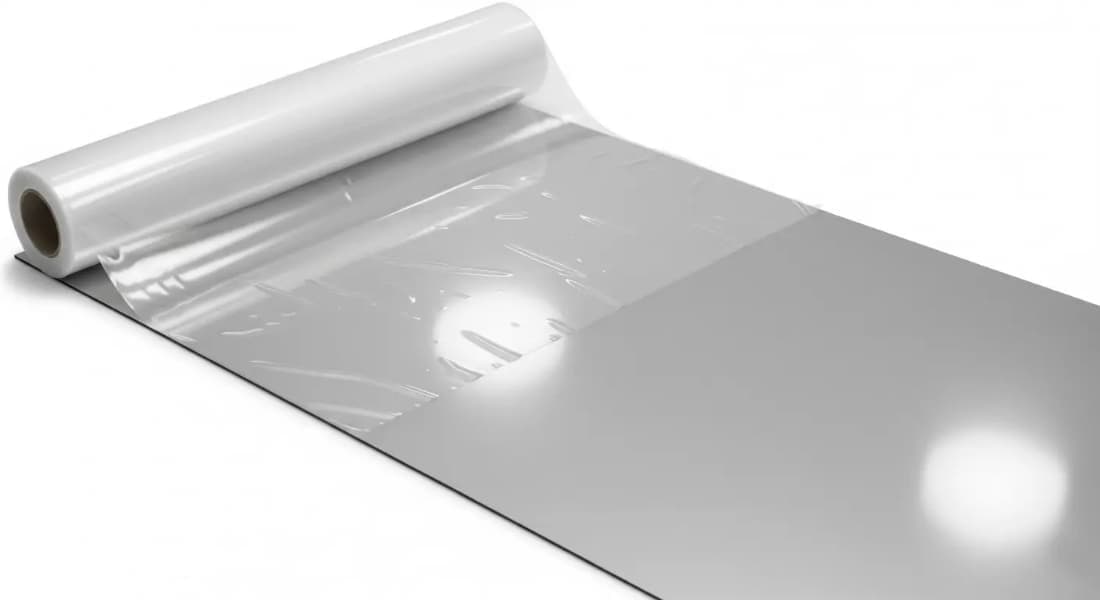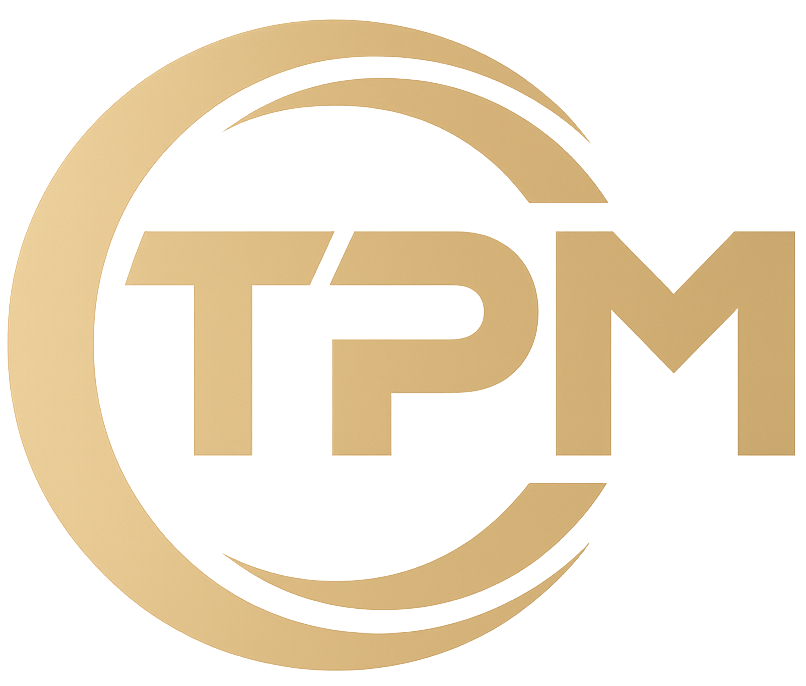Surface Protection with Protective Films
A simple way to keep surfaces safe from damage and scratches.
Table of Contents

What Are Surface Protection Films? Surface protection films are thin and durable coatings designed to protect sensitive surfaces from scratches, dust, and environmental damage. These films can be applied to various materials, including metal, glass, plastic, and composites.
Structure and Material of Surface Protection Film
Polymer Layer and Backing
The polymer layer forms the mechanical backbone of the film, providing strength and flexibility. Choosing the right polymer affects installation experience, tear resistance, and clean removal. The backing must be uniform and free of production defects to minimize bubbles and wrinkles. For outdoor projects, more UV- and heat-resistant grades are selected to prevent premature yellowing and brittleness.
Types of Adhesives and Formulations
Acrylic adhesives offer excellent UV stability and clean release, ideal for glass and smooth surfaces. Modified rubber adhesives provide higher initial tack, suitable for textured or powder-coated surfaces. Tack levels from Low to High are selected according to the substrate’s surface energy to balance adhesion and clean removal.
Functional Additives
UV stabilizers prevent property degradation under sunlight, extending the allowable residence time. Anti-static additives reduce dust attraction, crucial for electronic assembly lines. Anti-scratch materials lower surface friction, protecting glossy or high-gloss surfaces from marks and holograms.
Types of Surface Protection Films
By Adhesion Level (Low / Medium / High Tack)
Low Tack is recommended for acrylics and polycarbonates to ensure clean removal and minimal residue. Medium Tack suits painted metals and glass, balancing adhesion with clean release during transport. High Tack penetrates textured or powder-coated surfaces, providing extra security in demanding applications.
By Functional Properties
UV-resistant grades are designed for outdoor use, reducing yellowing and cracking while maintaining appearance. Anti-scratch grades are essential for glossy surfaces, preventing micro-scratches and holograms. Anti-static grades improve cleanliness by reducing dust adherence, keeping surfaces uniform.
By Appearance (Transparent, Semi-Transparent, Colored/Printed)
High Clarity transparent films allow full surface visibility for inspection before installation. Semi-transparent or matte films control reflection and improve label readability under bright light. Colored or printed films are useful for process coding and printing installation instructions directly on the film.

Industries and Environments for Use
Glass and Transparent Products
Glass protection films prevent physical damage and stains while maintaining the surface’s transparency.
Bright and Electronic Surfaces
These films are ideal for protecting bright and electronic surfaces from scratches, dust, and environmental damage.
Metals and Industrial Parts
These films are ideal for protecting metals in production lines, steel sheets, and sensitive industrial parts.
UPVC Profile Surfaces
Glass protection films prevent physical damage and stains while preserving the surface’s transparency.
Plastic and Composites
Plastic and composite surfaces are protected from abrasion, stains, and discoloration with these protective films.
Wooden Surfaces
These films are ideal for protecting UPVC profile surfaces from scratches, dust, and environmental damage.
Benefits of Using Surface Protection Films
Appearance and Product Quality Protection
The film protects against scratches, dirt, and surface impacts, preserving the final appearance. Active protection increases perceived product value and reduces quality complaints in sensitive projects. Maintaining visual quality positively affects brand perception and customer experience.
Waste and Cost Reduction
Reduced rework and polishing lower production and after-sales costs. Predictable delivery times improve production line planning. Lighter secondary packaging reduces shipping weight and costs.
Enhanced Customer Experience and Brand Value
Delivering a product free of scratches or marks increases customer satisfaction and lowers return rates. Professional appearance at unboxing creates a positive first impression. Consistent quality fosters brand trust and repeat purchases.

How to Choose the Right Film
Substrate and Surface Energy
Evaluate the surface energy and perform adhesion tests on actual samples to select the correct tack. Low Tack grades are recommended for sensitive surfaces, increasing tack if necessary. Documenting test results helps purchasing and production teams make informed decisions.
Environmental Conditions and Residence Time
Assess light exposure, humidity, and temperature to select appropriate UV/thermal stability. Residence time of the film determines the suitable UV-resistant grade. For long-term outdoor use, always follow the data sheet’s recommended residence time.
Subsequent Processes (Cutting, Pressing, Bending)
For bending, pressing, or vacuum forming, the film must be elastic and compatible with adhesive strength. During laser or CNC cutting, the film must not melt or leave residue. Proper alignment prevents edge lifting and adhesive marks.
Technical Specifications
Thickness and Mechanical Strength
Common thicknesses are 40, 60, 80, and 100 microns for typical applications. Heavier applications require thicker films for abrasion resistance. Balance between thin films for delicate surfaces and strength for transport is crucial.
Adhesion and Clean Release
180-degree peel is the key indicator for clean removal, matched to the target substrate. Excessive adhesive can damage sensitive surfaces; low adhesive is insufficient for textured surfaces. Scientific selection prevents sticky residue and marks after removal.
Temperature and UV Stability
Operating temperature ranges are typically 0–60°C, up to 80°C for specific applications. UV stability varies from 30 to 180 days depending on the grade. Following data sheet limits avoids performance loss.
Proper Installation
Surface Preparation and Environment
Ensure the surface is clean, dry, and free of oil or silicone for optimal adhesion. Use compatible solvents and lint-free cloths to remove dust. Room temperature 15–30°C ensures the best installation results.
Dry and Wet Installation Techniques
Dry method uses squeegee or roller with uniform pressure for fast, clean application. Wet method is suitable only for certain glass and requires complete drying before handling. Excessive stretching can cause edge lifting or wrinkles; avoid it.
Preventing Bubbles and Wrinkles
Work from the center outward, gently removing air bubbles. For large panels, use logical segmentation and minimal overlap. Accurate initial alignment reduces later adjustments.

Removal and Recycling
Clean Removal
Peel gently at ~180-degree angle from a corner to minimize surface stress. In cold environments, mild heating softens the adhesive for smoother removal. Avoid high heat on sensitive surfaces.
Waste Management and Recycling
Single-material grades are more recyclable and less contaminated. Separating contaminated films improves recycling quality. Recycling in internal lines reduces disposal costs and supports sustainability.
Standards and Certifications
Chemical Safety (RoHS/REACH)
Compliance ensures controlled migration of hazardous substances and product safety. For export to sensitive markets, this provides a competitive advantage. Up-to-date certificates must be available and verifiable.
Quality Control and Traceability
Record all dimensional, peel, and UV stability test results per batch. Tracking systems enable faster resolution of quality claims. Transparent documentation builds trust with industrial customers.

Frequently Asked Questions (FAQ)
What is a surface protection film and what is it used for
A surface protection film is a polymer layer applied on metal, glass, plastic, and composite surfaces. It prevents scratches, dust, stains, and physical damage during transport, installation, and storage. It helps preserve the final appearance and quality of the product.
What types of surface protection films are available
Films are categorized by adhesion level (Low/Medium/High Tack), functional properties (UV-resistant, anti-scratch, anti-static), and appearance (transparent, semi-transparent, colored/printed). Each type suits specific substrates and environmental conditions. Correct selection ensures clean removal and optimal protection.
Which surfaces can be protected
Metals, glass, plastics, composites, and coated surfaces are suitable. Selection depends on surface energy and sensitivity. Widely used in automotive, appliances, construction, and electronics industries.
How should the film be properly installed
Ensure the surface is clean, dry, and free of oil/silicone. Apply from center outward with uniform pressure to avoid bubbles and wrinkles. For large parts, logical segmentation and minimal overlap are recommended.
How to remove the film without leaving adhesive
Start peeling from a corner at a 180-degree angle. In low temperatures, mild heating softens the adhesive for smoother removal. Avoid high heat on sensitive surfaces.
Is the surface protection film recyclable
Yes, single-material grades are recyclable. Separating contaminated or mixed films improves recycling quality. Recycling reduces disposal costs and is environmentally friendly.
What standards are important for surface protection films
Compliance with RoHS and REACH ensures chemical safety and product compliance. Internal customer or OEM standards must also be followed. Proper documentation and QC records increase trust and acceptance in export markets.
